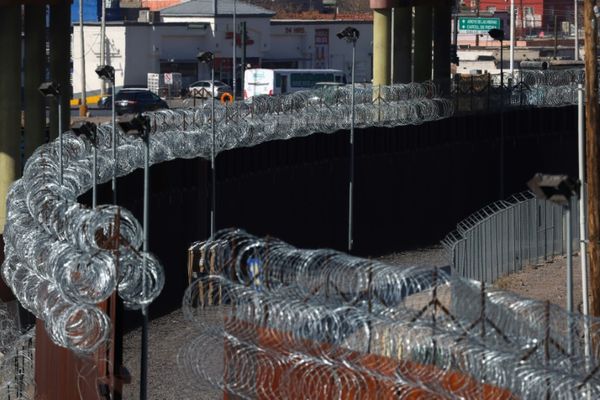
The customer experience on the outside is shaped by what is happening on the inside. Internal efficiencies in the form of smoother internal processes and procedures translates into external customer experience improvements. To create a great external customer experience, the best solution is often to focus on internal efficiencies. According to a recent survey of 1,300 global CEOs, 77% say their main focus to drive revenue growth is to create operational efficiencies. Operational efficiencies run the gamut of ways to make processes run smoothly, and when done correctly can have a tangible impact on the business. Especially with the growth of new technology and automation, companies can run more efficiently than ever before.
Here are 10 examples of how operational efficiencies improve customer experience.
1. Carvana Sells Cars Through Vending Machines
The typical car-buying experience is full of red tape for both employees and customers. Carvana revamped the entire experience by creating a business model based around operational efficiencies. Instead of physical dealerships, it operates car vending machines. Customers find the car they want online, and it’s then shipped to a local vending machine, where customers can pick it up, drive it and pay for it. Removing the extra steps helps the company run more efficiently and makes life easier for customers.
2. UPS Will Start Drone Delivery Service
Ubiquitous brown delivery trucks could soon give way to brown delivery drones. UPS is testing drone delivery for residential packages, which would allow UPS drivers to fly drones from their trucks to deliver packages within the same area. The plan would reduce emissions and mileage, thus lowering the cost for UPS and likely getting packages to customers more quickly.
3. Rio Tinto Uses IoT Sensors For Preventative Maintenance
Truck maintenance costs can quickly add up—especially for massive mining rigs. Rio Tinto uses IoT-connected sensors on its vehicles that track each truck’s status and can perform preventative maintenance based on a number of factors. Employees can always know every truck’s location and performance, which is monitored from a single operations center. As a result, Rio Tinto saves around $2 million daily for every time a breakdown is avoided, a savings it can pass on to customers.
4. Ford Factory Monitored By Drones
Ford recently started using drones in its London engine factory to inspect hard-to-reach areas and diagnose machine statuses. The drones fly around the factory and use cameras to zoom in on areas that humans aren’t able to reach. Investing in drones not only allows the factory to operate more smoothly, but it saves money and allows the plant to continually operate instead of having to shut down periodically to perform the inspections by hand. The factory produces a steady stream of engines for customers eagerly waiting their new cars.
5. McDonald’s Offers Self-Service Kiosks
No one likes waiting in line to get their fast food, so McDonald’s streamlined the process and gave more power to the customers. The chain rolled out touch-screen kiosks so customers can order and pay for their own food without having to wait in a long line to talk to a human. Just like ordering in person, the kiosks offer a wide variety of personalization offers. Customers are satisfied and can typically move through the line faster.
6. Amazon Streamlines Order Fulfillment With Robots
The e-commerce giant has to be strategically efficient to meet its quick shipping promise. Amazon uses thousands of robots at its warehouses around the world that help track inventory and pick items to be packaged for customer orders. Using robots removes the chance for human error and also allows inventory to be stored in a more condensed manner. Human employees work alongside the robots through the entire order fulfillment process, but the robots help move things along for fast turnaround.
7. Morgan Stanley Streamlines With Analytics
With a global team of 1,000 agents who handle more than 5.5 million calls a year, Morgan Stanley’s contact center was heavily segmented with teams of employees handling different types of products and issues. Getting customers to the right agent was a challenge. The company turned to an analytics program to monitor calls and metrics while also offering targeted agent training and coaching. The analytics pinpoint the root causes for many customers issues, which helps future calls get routed much more quickly and efficiently.
8. Walmart Adds Self-Service Pickup Towers
Many retailers offer order online, pick up in store services, but Walmart takes it a step further with a more efficient self-service pickup process. The store has started rolling out Pickup Towers at hundreds of its stores, which are massive towers full of customers’ orders. Customers simply scan their barcode or enter their order number, and their items are moved to the pickup window. The efficient process frees up employees to serve customers in other ways and allows customers to get their items on their own schedules.
9. Care/of
One of the most efficient ways to limit item returns is to give customers exactly what they want in the first place. Care/of curates vitamin packs for each customer’s unique health and lifestyle needs. Customers take a short questionnaire about their lifestyle and goals, which populates recommendations of vitamins and supplements. The automated process ensures that customers get the best products for their bodies.
10. Mercedes-Benz
In order to efficiently move trucks and buses through its large-scale production facility in Brazil, Mercedes-Benz takes advantage of AI. The sales system combines data like registration numbers and sales statistics to provide salespeople with an accurate view of the pipeline and help them make the best offers to customers. The more data is inputted, the smarter the system becomes and the more efficient sales staff can be to help customers.
Operational efficiencies streamline processes for employees and can have a big impact on customer experience and the bottom line.
Blake Morgan is a keynote speaker, customer experience futurist and the author of two books including her new “The Customer Of The Future.” Stay in touch with her weekly on her newsletter.







